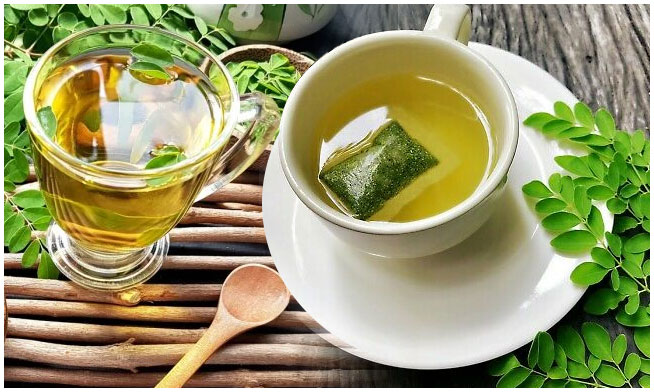
People are trying to be healthy nowadays and many people are opting for healthy beverages instead of soda and the juices you get from the market. So many people try drinking green tea but not everyone opts for the same because the flavour does not suit everyone.
Are you someone who is looking to switch to healthy beverages then you can always go with moringa tea. Moringa tea bags manufacturer produces moringa tea derived from the leaves of the Moringa oleifera tree, it is regarded for its exceptional health benefits, earthy flavor, and versatility. But have you ever wondered how these miraculous tea bags come to life? Let us jump into the journey of production and processing of moringa tea bags, from tree to cup.
The Moringa Oleifera Tree: A Green Powerhouse
Before we get into the production of tea bags, it’s essential to understand the star of the show – the Moringa oleifera tree. Often referred to as the ‘drumstick tree’ or ‘miracle tree,’ Moringa oleifera is a native of the Indian subcontinent but is now widely cultivated in various tropical and subtropical regions around the world. Here’s what makes this tree unique:
- Nutrient-Rich Leaves: Moringa leaves are a nutritional treasure. They are packed with essential vitamins, minerals, antioxidants, and amino acids, making them perfect for brewing a healthy tea.
- Sustainability: Moringa trees are drought-resistant and can grow in a variety of soils, making them an environmentally friendly crop with low resource demands.
Harvesting Moringa Leaves
The journey of a Moringa tea bag begins with the careful harvest of its leaves by the moringa tea bags manufacturer. Harvesting is a critical step that influences the quality of the final product. Here’s how it’s done:
- Seasonal Considerations: Moringa leaves are typically harvested when the tree is in its prime, usually in the dry season. This ensures that the leaves are less prone to spoilage.
- Selective Picking: Only mature leaves are plucked, as they contain the highest nutritional content. Workers use shears or their hands to pick these leaves selectively.
- Hygiene and Quality: Cleanliness is crucial. Leaves are collected in clean containers, and workers wear gloves to prevent contamination.
Cleaning and Sorting
The moringa tea bags manufacturer lets the harvested leaves undergo a thorough cleaning and sorting process to remove impurities, dirt, and damaged leaves. The steps include:
- Washing: The leaves are washed with clean, running water to remove surface impurities.
- Drying: After washing, the leaves are spread out to air dry. This step is crucial to reduce moisture content, which can lead to mold growth.
- Sorting: Once dried, the leaves are sorted carefully, discarding any leaves that don’t meet the quality standards.
Grinding and Powdering
The dried and sorted leaves are ground into a fine powder. This powder is the primary ingredient used in the production of tea bags. The grinding process involves:
- Machinery: Specialized equipment is used to grind the leaves into a fine powder, ensuring uniform consistency.
- Quality Control: Quality checks are performed at this stage to ensure that the powder meets the desired quality standards.
Blending and Flavoring
To enhance the flavor and aroma of moringa tea some of the moringa tea bags manufacturer blend powdered leaves with other complementary herbs and flavors. The choices can be diverse and may include ingredients like lemongrass, mint, ginger, or hibiscus. Blending and flavoring involve:
- Selection of Complementary Ingredients: Careful consideration goes into choosing herbs and flavors that complement the earthy taste of Moringa.
- Mixing: The Moringa leaf powder is mixed with the selected ingredients in precise proportions to achieve the desired flavor profile.
Tea Bag Production
With the moringa tea blend ready, it’s time to prepare the tea bags. Moringa tea bags manufacturer should take extra care since this process ensures the tea remains fresh and easy to brew:
- Bag Material: The choice of bag material is critical. It should be food-grade, biodegradable, and capable of retaining the tea’s freshness.
- Filling: The tea blend is carefully measured and filled into each tea bag. The right quantity guarantees a balanced flavor.
- Sealing: The tea bags are sealed to prevent moisture and air from degrading the tea’s quality.
- Packaging: The filled and sealed tea bags are packaged in a way that preserves freshness. The packaging is often designed to be airtight and light-resistant.
Quality Control and Testing
Throughout the production process, quality control and testing are integral. This ensures that the moringa tea bags meet safety, quality, and taste standards. Trained professionals assess the taste, aroma, and appearance of the tea bags. The final product must adhere to local and international food safety regulations.
Distribution and Consumption
Once the moringa tea bags have passed all quality checks, they are ready for distribution and consumption. The bags may be sold in bulk or retail, making their way to local stores, online marketplaces, and even specialty tea shops.
The production and processing of moringa tea bags by Moringa tea bags manufacturer are a tedious process, from the careful harvest of Moringa leaves to the meticulous blending, flavoring, and packaging.
As you enjoy your next cup of moringa tea, you’ll appreciate the dedication shown by Moringa Wholesale’s tea bags. that goes into every bag, making it a truly magical and healthful infusion. They also manufacture Moringa tea cut leaves just to suit people’s preferences.
So, next time you sip on a cup of Moringa tea, remember the journey it took from the leaves of the miracle tree to your cup, nourishing your body and delighting your taste buds.